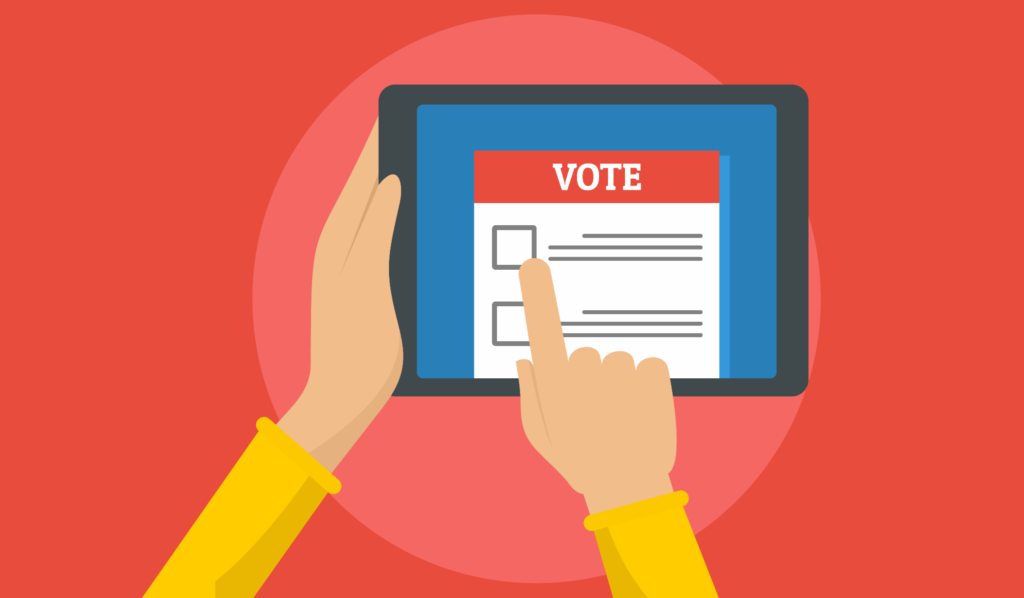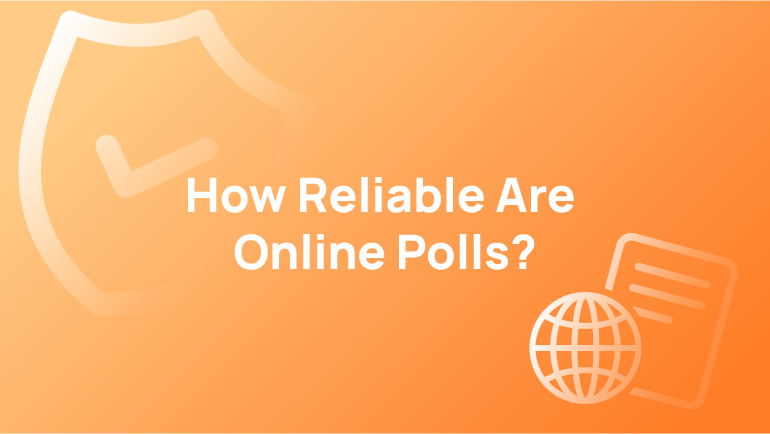
Source: SurveyLegend
Online polls have been around for a while, but they have become more prevalent in recent years with the rise of social media. Creating polls on social media is one of the main reasons online polls are becoming so popular. They allow you to gather your audience’s opinion on a given topic in real time.
Online polls are a great way to collect data and get feedback from your audience quickly and effectively without spending too much time or money on it, but how do they work, and how do you join them?
Let us get into more details.
Poll vs Survey: A Comparison
By polling, you can discover people’s preferences and see what works best for them. To measure success, you can conduct polls at varying stages during an event or initiative and extract data from the respondents; there is a particular interval at which polls are conducted.
Traditionally, most polls were conducted in person. A question was asked to a group of people, and they were encouraged to raise their hands if they agreed. There was also the telephone poll, where a respondent could dial a number.
However, in today’s digital world, polls are conducted online, and users can answer with a click of a mouse.
In a survey, a sample of people gives information intending to generalise the results to a larger group. Government and private organisations, media and academic institutions benefit from survey data and insights.
In the past, surveys were conducted by mail and by phone. Paper surveys later replaced them. Now, most companies conduct surveys online with free survey builder software. They can ask questions such as single-choice, multiple-choice, and open-ended questions.
Initially, internet surveys were primarily text-based or choice-based. However, now that multimedia is so prevalent over the internet, it is possible to include graphical, matrix, and audio/video questions. Respondents can answer the survey through email, website, QR code or mobile app.
To generate meaningful insights in the form of reports, you can run different data analytics algorithms once the responses have been collected.
When To Use Polls
For quick insights into customers’ choices and feedback, create free online polls when you don’t need to analyse their preferences in great detail. Similarly to surveys, you can filter results, create criteria, and generate reports for polls, but the results will only be based on responses to a single question. You can use online polls when you do not need a lot of data.
Furthermore, polls allow respondents to see how they compare to others. Therefore, they can compare their choices versus the whole group of respondents.
How are Polls Conducted?
How polls are conducted depends on the poll type and purpose. Some polls are used to measure public opinion, while others are used for research purposes. They can be conducted in various ways, such as online surveys, telephone interviews, or focus group discussions.
Moreover, they are administered by asking questions to a group of people and then analysing the data collected from them. A lot of attention is paid to polls in politics. Getting people’s confidence and letting them know their vote matters can be complex.
To conduct polls, here are what you need to put in mind:
Creating a Sample
Polling samples can be set up in various ways. Two of the most commonly used methods include:
- Controlled samples are samples in which you can include all types of individuals from every aspect of society. It is a practical way to sample large numbers of people. It is essential to choose a sample representing all those people from different parts of the country, as well as a variety of occupations, lifestyles, and age groups.
- Area samples: these are samples where only one demographic is focused on, which is the voters in that area. Area sampling is a growing method of polling. Polling authorities use this information to gather facts about the country’s various parts, including developed towns, cities, and districts.
Framing Poll Questions
- Ask a neutral question. Don’t ask a question that hints at an answer you already think is correct. The result will be biased since humans tend to respond to questions hinting at. Doing so will put your results’ credibility at risk, and you might receive unintended or inaccurate responses.
- Be specific when you ask questions. Consider people on the edge when it comes to participating in a survey. If they are inconvenienced, they may not participate. By asking unclear questions, you are already taking steps to ensure that your poll is transparent. Make sure your questions are simple and easy to understand. Do not use words that have different meanings in the same context.
- Make relatable questions. Include essential topics that are relatable and that the general public can respond to. Using complex or technical questions could confuse your respondents. This could lead to meaningless responses.
Types of Questions to Ask
Depending on the type of information you wish to get, the form of the question is essential.
- Simple and direct questions like yes or no questions. There is a question such as “could ABC candidates enhance the educational system?” The answer can either be ‘yes’ or ‘no’. The results here may not be much to interpret since there is not much to interpret besides some percentages of people who agree or disagree with the question.
- Open-ended questions. They allow respondents to express themselves freely and in a concise manner. Such studies aim to learn what the population is thinking and why. This type of question can be challenging to interpret because it requires analysing the meaning of what the respondent is trying to convey.
- Questions with multiple choices. A checklist is available as an answer option. Each person should choose the option that reflects their opinions about the topic. MCQs can determine how much respondents know and what their opinions are on the subject.
Conclusion
In this age, online polls are a great way to gauge which topic is the most popular among many people. They also allow your target audience to voice their opinions easily; however, to properly conduct polls, there are many things. Be sure to pick the appropriate sample, frame your questions well, and ask the suitable types of questions for a better and more effective process of inquiry.


